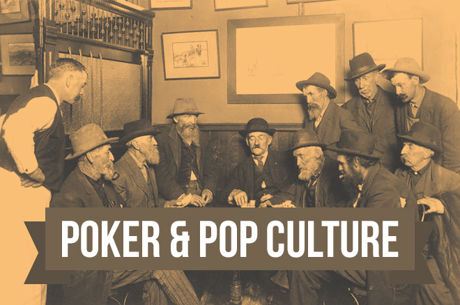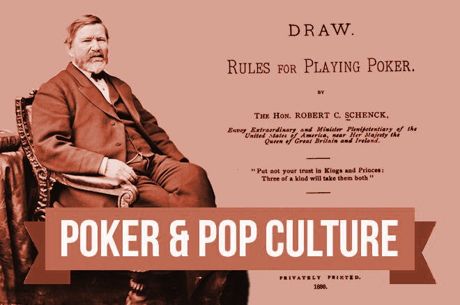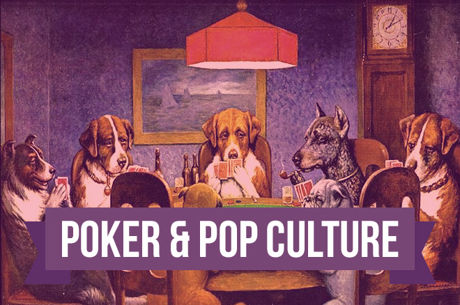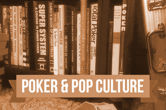Poker & Pop Culture: Laughing and Learning with "Webster's Poker Book"
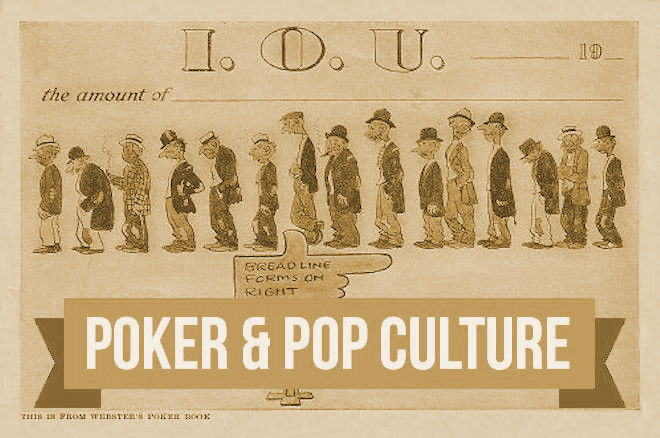
Having considered over the last few weeks what some of the earliest poker strategy books from the late 19th and early 20th centuries tell us about the game's place in the culture, let's continue our look at early poker titles with a unique and humorous 1925 entry, called simply Webster's Poker Book.
The book's title gives the spotlight to the beloved cartoonist Harold Tucker Webster — better known as "H.T. Webster" or "Webby" — who contributes 50 poker-themed cartoons to the volume. Webster was the most famous American cartoonist of the first half of the 20th century, responsible for over 16,000 cartoons, more than a dozen books, and even once appearing on the cover of Time magazine.
But in truth the book is a collaborative effort, with a funny foreward by the columnist George Ade, stories and ancedotes by the pulp fiction author and screenwriter George F. Worts, and additional material by the playwright and Algonquin Round Table member Marc Connelly.
There's also a lengthy appendix sharing Robert Frederick Foster's history of poker, rules of the game, and strategy advice, all excerpted from his landmark Foster's Complete Hoyle: An Encyclopedia of All the Indoor Games Played at the Present Day, originally published in 1897 and most recently updated in 1922.
A note early on advises readers new to poker to skip ahead to Foster's rules, "then the rest of the book will be more helpful — and more amusing." And indeed, the book is equal parts educational and entertaining, evidence that by the mid-1920s there was not only growing interest in the game, but a considerable compendium of poker-related lore from which draw.
As Ade writes in his foreward, "Euchre and seven-up have gone over the hill, but poker is still doing as much business in the winter as baseball does in the summer."
Much humor in the book revolves around the battle of the sexes for which poker represents a primary cause of conflict, in particular the efforts of husbands to discover ways to escape the notice of disapproving wives in order to play their favorite card game — a struggle dramatized in the poker film A Cure for Pokeritis discussed here before.
An early chapter titled "Dealing with the Little Woman" jokes about failed excuses before offering more persuasive suggestions guaranteed to achieve positive results.
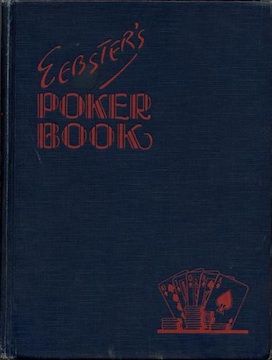
One such recommendation involves lying about an unexpected visit to the office from the tax man, income taxes having only recently been introduced in the U.S. a little over a decade before. "The Income Tax, with all its disadvantages, has been a real help to poker players," goes the explanation.
"Listen, hon," the reader is told to say. "The income tax man is up here in my office, and it's going to take me hours to straighten things out. I'll be home just as soon as I show him where his mistake is." This excuse "never fails," apparently.
Besides helping show how poker was a game mostly played by men, such jokes further illustrate how the game had moved from saloons and steamboats into private homes, as do subsequent chapters offering advice for "Planning the Poker Party" and tips regarding "The Etiquette of Poker."
Naturally, most of the advice is delivered tongue-in-cheek.
"When a glass is accidentally knocked from the table, it is quite proper to kick it into a corner with the foot and pay no more attention to it until the game is over," we're instructed. So, too, is it considered "unethical to empty an ash tray until about one-third of its contents has spilled onto the floor."
There's more joking about remorse over losing (and hiding losses from wives), keeping games going when behind, and breaking away when ahead. There are genuinely useful tips mixed in among the silliness, too, such as a recommendation not to play wild games too often and an argument outlining the advantages of playing for lower limits.
"Before starting to play, agree on a time limit and a money limit," we're told. "You will find it reasonably easy to adhere to the money limit."
The subject of cheating in poker is broached in a chapter about "Poker Wolves" that includes warnings about players with "educated fingers" and other tricks involving marked decks, palming, bottom dealing, and collusion. Another chapter called "Playing Safe" offers advice to the "poker débutante" for how to play a tight, cautious style complete with rules to follow (including one stating "there are exceptions to every rule"). One more chapter lists "Fascinating Figures" with odds and probabilities for drawing five-card poker hands.
Even today, the text is diverting. But Webster's cartoons are the real highlight of this volume, producing much more consistent grins, I'd venture.
Here's one, titled "The Inscrutable Poker Face," having to do with that ongoing struggle between poker-playing husbands and disapproving wives.
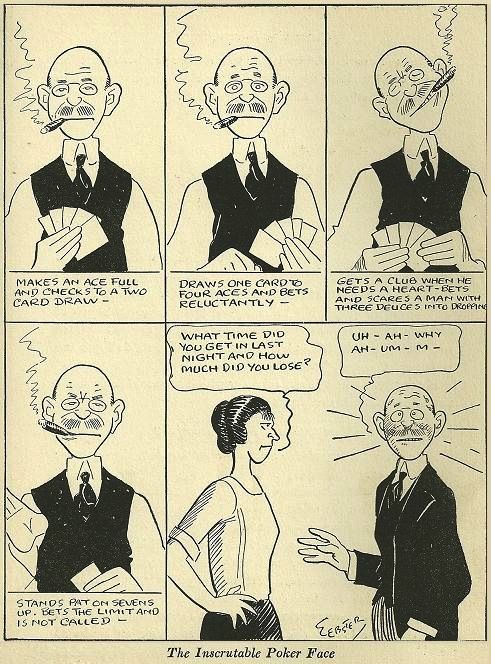
"The Comeback" illustrates that familiar rollercoaster of emotion we've all experienced after starting a session badly, then trying desperately to dig ourselves out of the hole.
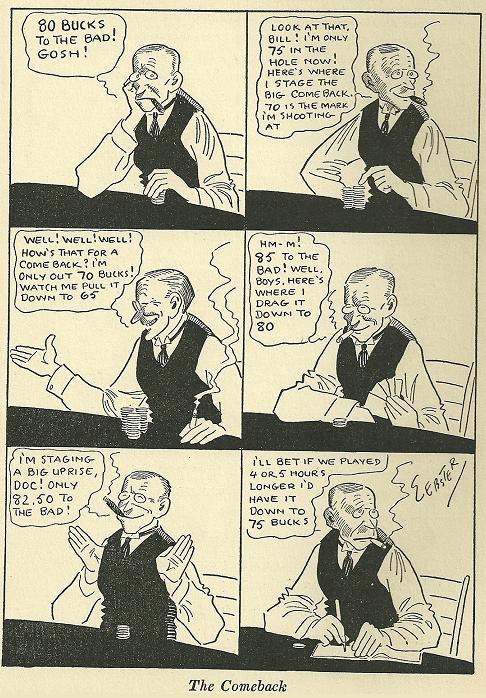
And in "The Psychological Effect of a Big Stack," Webster illustrates in a single panel one of the benefits of buying in for the maximum.
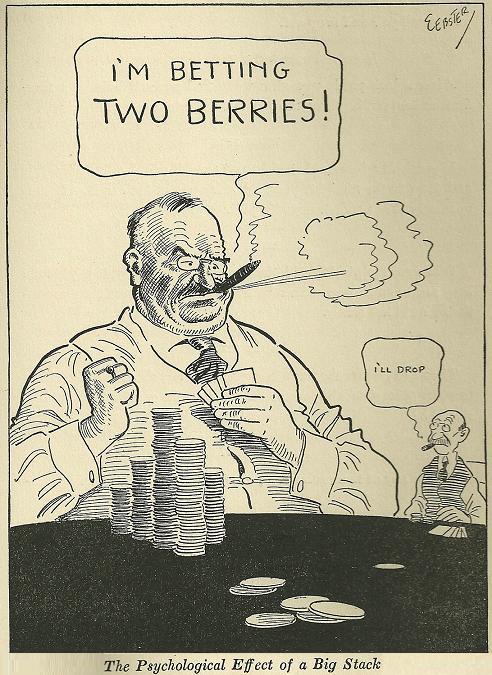
Finally, further evidence of the growing popularity of home games is found in the several accessories that came only with the original hardbound edition of Webster's Poker Book. Hidden inside the back cover is a little drawer that can be pulled open with a ribbon, inside of which are contained:
- several sheets of pop-up cardboard red, white, and blue poker chips (each decorated with a cartoon by Webster)
- postcards to use to invite friends to home games
- fill-in-the-blank IOU notes to use at the end of the night (one is pictured up top)
Indeed, the book — the subtitle of which is "Glorifying America's Favorite Game" — could be regarded as something of a celebration of a cultural craze. In a way, it recalls some of the products — including the dozens of books on strategy and all things poker — some of us recall being produced amid the "poker boom" a little over a decade ago.
From the forthcoming "Poker & Pop Culture: Telling the Story of America’s Favorite Card Game." Martin Harris teaches a course in "Poker in American Film and Culture" in the American Studies program at UNC-Charlotte.

